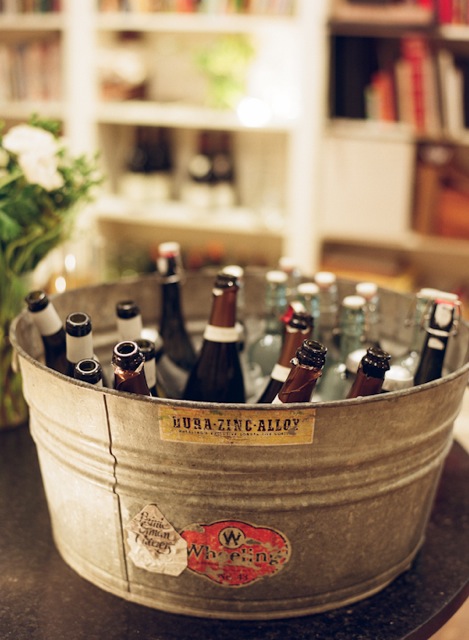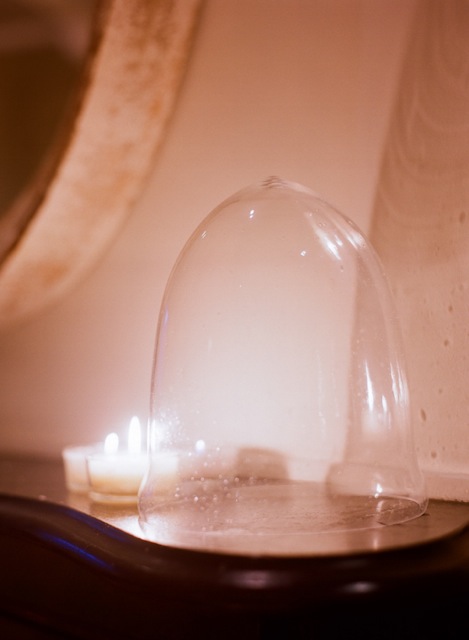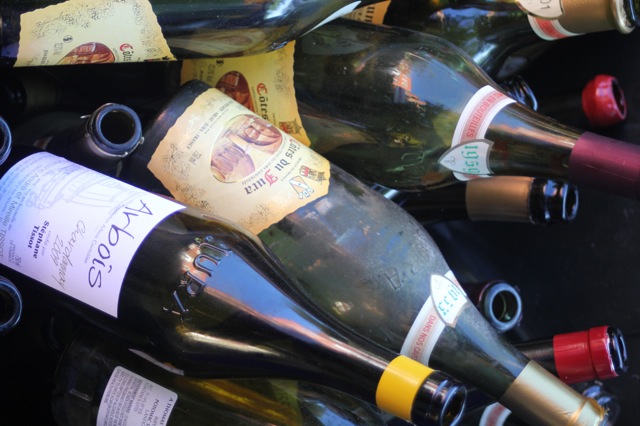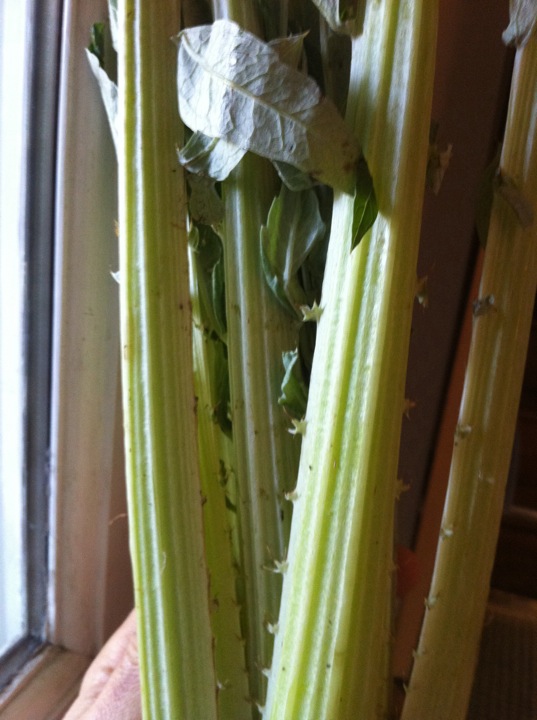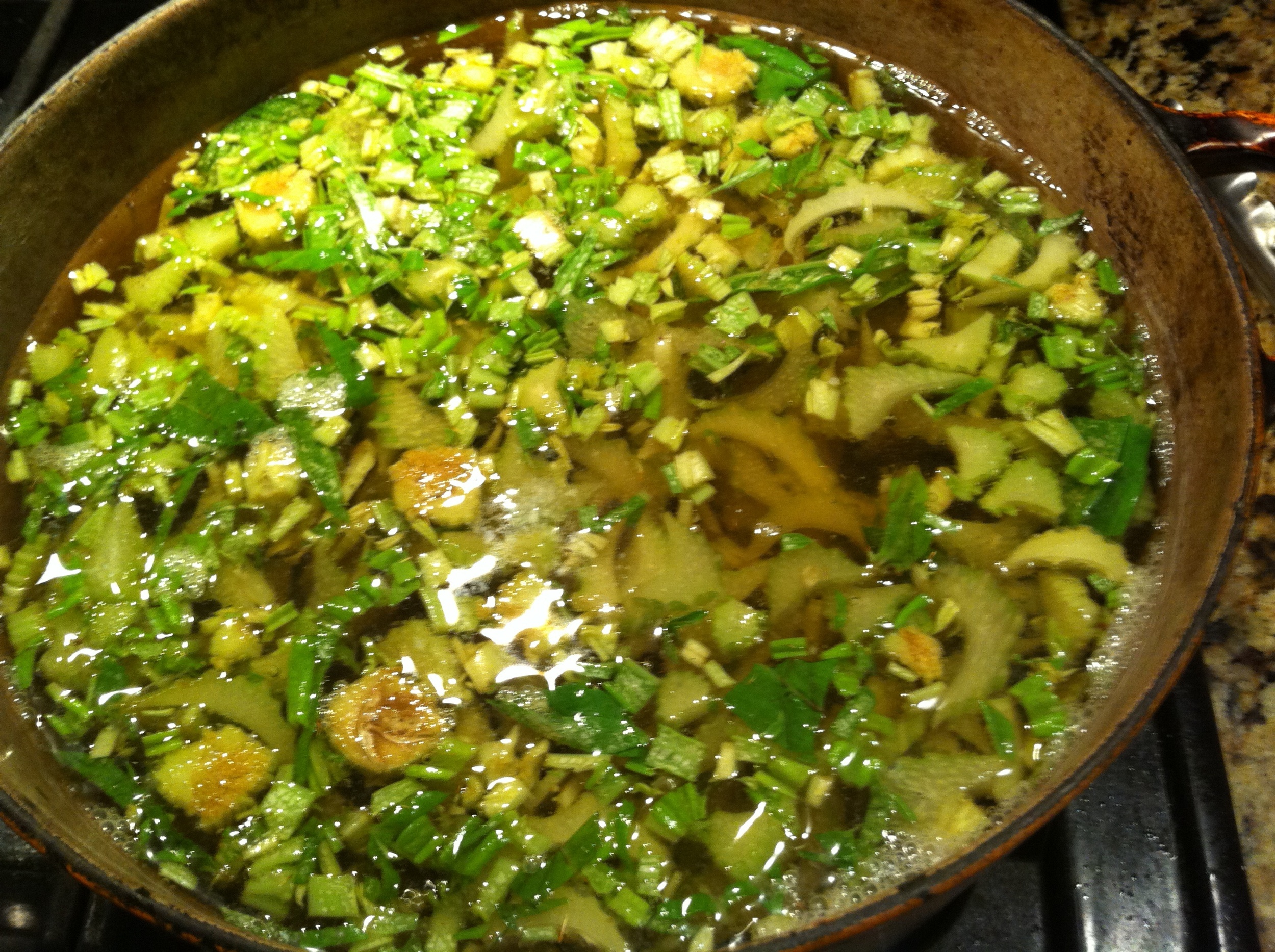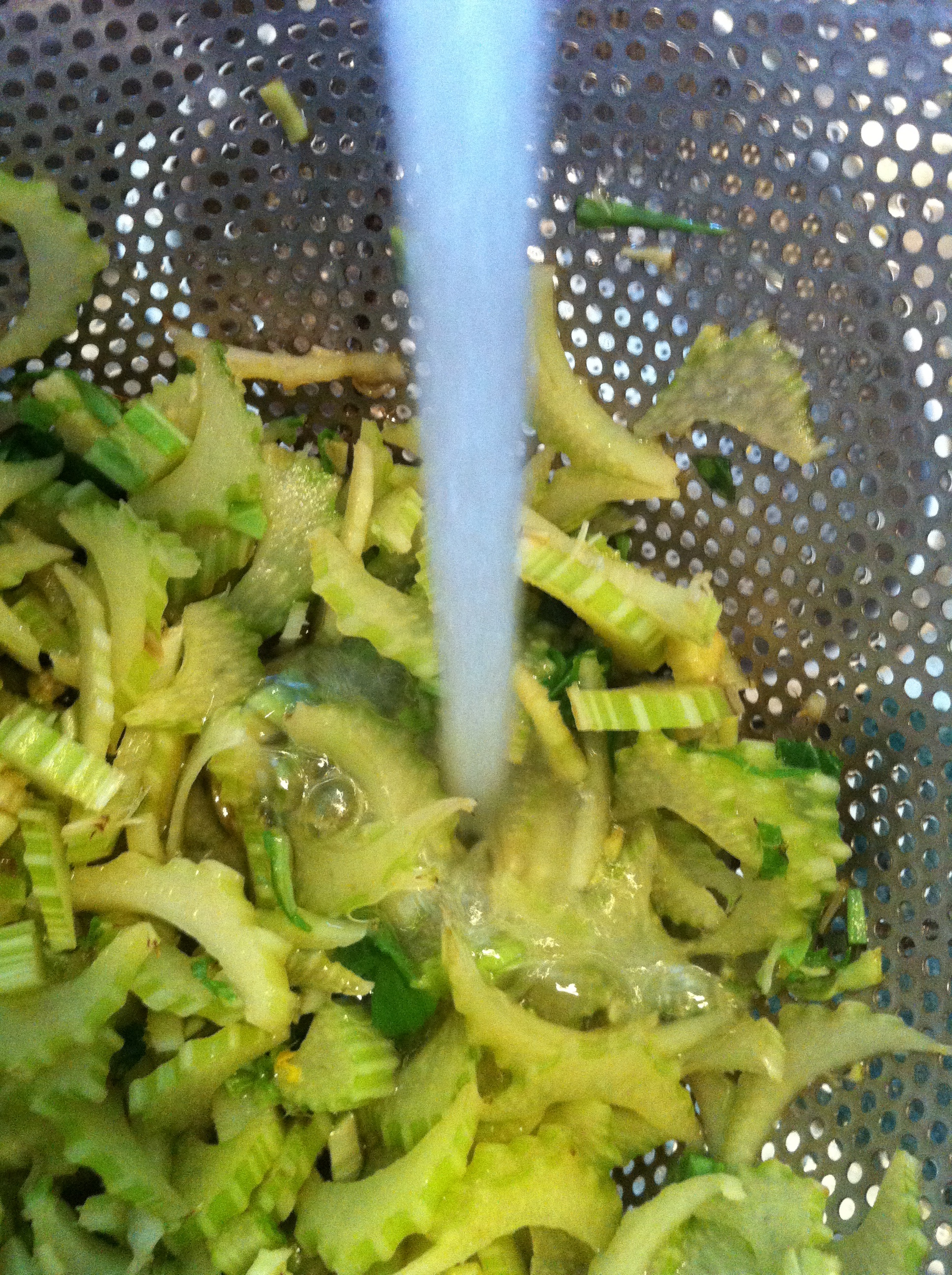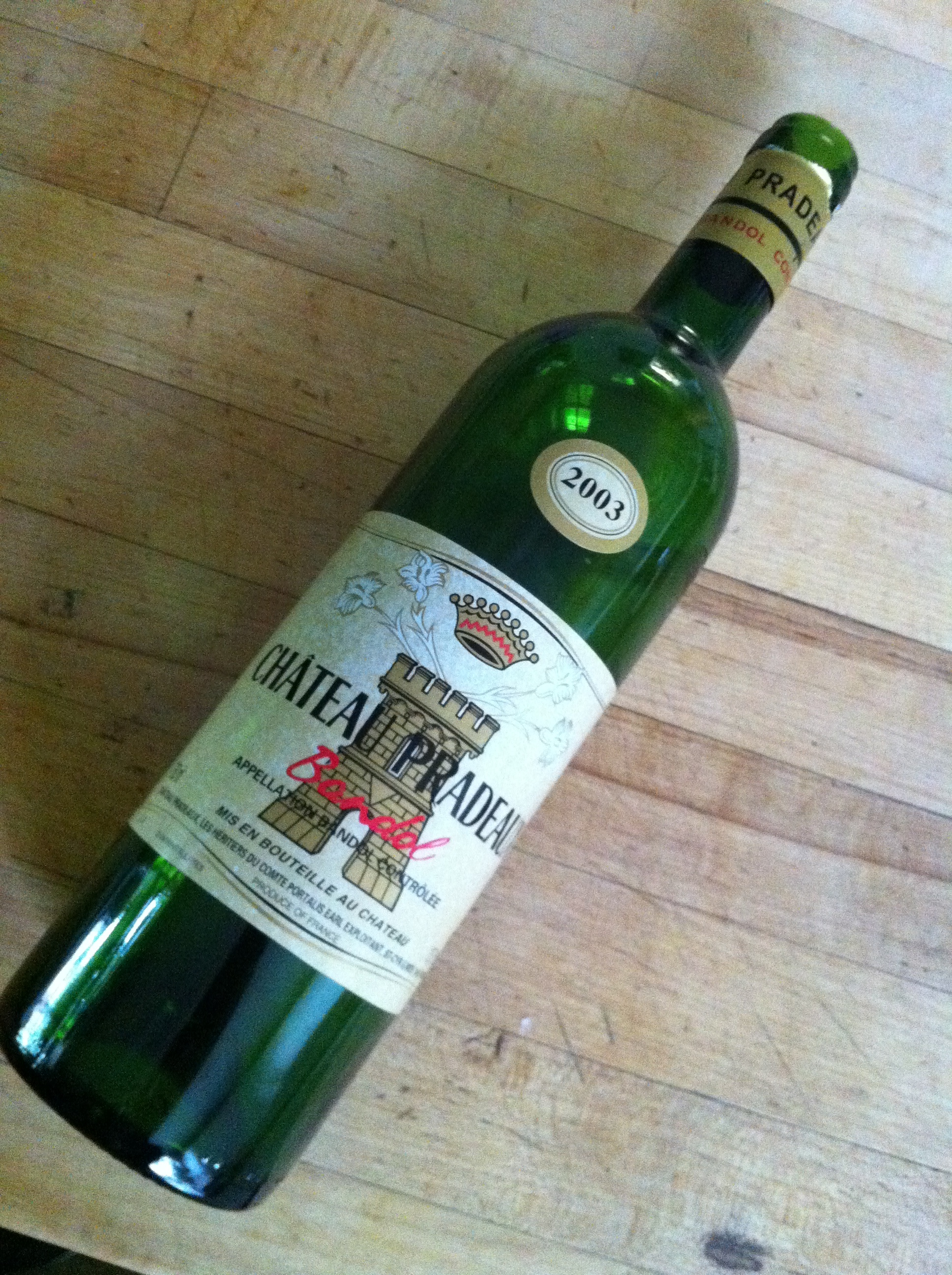
bread making photo by Erik Johnson from a sunny day...today, it was dark and rainy– perfect bread making weather!
An enthusiastic group came to 1508 this morning for a bread class– it was fun.
We all kneaded bread, talked about gluten, different types of flours and grains, how to comfortably fit bread making into everyday life...and we made a whole lot of bread.
The recipes–
48 Hour Farm Bread
1 tablespoon fresh compressed yeast
1 ½ cup water at room temperature
1 cup whole wheat flour
2 cups all purpose unbleached flour
2 teaspoon salt
1.Combine yeast and water in a large bowl.
2.Add additional ingredients and mix until incorporated.
3.Cover with plastic and let sit in a warm spot for 48 hours.
4.Lay a dish towel out on a flat surface and dust generously with flour.
5.Dump dough onto the towel and make into 10 inch square.
6.Fold square into thirds, dust top with flour, cover and let rest for 15 minutes.
7.Fold in thirds using short end.
8.Brush off excess flour and gently stretch top layer over the seams visible on 2 sides of the dough.
9.Cover ½ of a clean dish towel generously with flour and top with several tablespoons of wheat bran.
10.Place bread on part of towel covered with flour and sprinkle top with more flour and bran.
11.Cover with the remaining half of the towel and let rise for 2 hours.
12.After 1 hour of rising place a 2 quart casserole (I use a Le Cruset, enamel covered cast iron pan) with a cover in a 500 degree oven.
13.After an hour remove cover, place dough in the casserole and cover and bake for 30 minutes, uncover and bake an additional 15 minutes.
14.Remove bread from the casserole and let cool for at least 15 minutes before slicing.
Cracked Wheat Bread
*¼ cup cracked wheat, soaked for 24 hours in 1 cup water
1 ½ cups warm water
3 tablespoons fresh compressed yeast
¼ cup good quality olive oil
¼ cup molasses, maple syrup, honey or sorgum syrup
¼ cup sunflower seeds
¼ cup flax seeds roughly chopped
¼ cup chopped walnuts
4 cups plus stone ground whole wheat flour
1 teaspoon salt
1.In a large bowl combine yeast and water.
2.Add oil, molasses (or other), sunflower seeds, cracked wheat, 2 cups flour and salt.
3.Mix until thoroughly combined.
4.Add remaining flour and knead until smooth, add a little more flour if sticky.
5.Lightly coat a clean bowl with olive oil, place dough in bowl and cover with a damp cloth.
6.Let dough sit in a warm spot until doubled, about 40 minutes.
7.Divide into two, shape into loaves and place in oiled loaf pan.
8.Put in a warm place, cover with a towel and let rise until doubled, about 30 minutes.
9.Bake in a 375 degree oven until top is browned and loaves sound hollow when tapped, about 30 minutes.
Foccacia
1 ½ tablespoon fresh compressed yeast
1 ½ cup stone ground whole wheat flour
1 ½ cup all purpose unbleached flour
2 heaping teaspoons of salt
about 2 tablesoons olive oil
1 tablespoon finely chopped fresh oregano, rosemary or thyme
¼ cup roughly chopped olives (optional)
1 teaspoon medium coarse sea salt
1.Combine 1 ½ cups of water and the yeast, mix until smooth.
2.Add the flour and salt.
3.Knead this dough until thoroughly combined and then an additional 2 minutes.
4.Preheat oven to 450 degrees.
5.Cover with plastic wrap and leave to rise for 30 minutes.
6.Take a large baking tray, and lightly cover it in olive oil. Spread the dough on the tray, and create little indents with your fingers for the oil to soak in.
7.Coat top with a thin layer of oil and top with oregano, sea salt, and olives (if using).
8.Cook for 8-10 minutes in the oven.
9.Cut as soon as you take the focaccia out of the oven.
Pizza Dough
1 cup all purpose unbleached flour
1 cup whole wheat flour
1 1/2 cup 00 flour
2 tablespoons fresh compressed yeast
1 ½ cup lukewarm water
2 slightly heaping teaspoon of salt
1.Mix the flour and salt.
2.Dissolve yeast in the water and add to the flour mixture.
3.Knead this dough by hand until thoroughly incorporated and then continue kneading for 2-3 more minutes.
4.Cover with plastic and leave to sit at least 45 minutes or up to 24 hours.
5.Pat out dough by hand to desired thickness and cook in pizza oven or conventional oven at 450 on a stone.
No Recipe Bread (this is a rough recipe, start with this experiment and make it your own)
3 cups water
2 tablespoons fresh compressed yeast
2 tablespoons sugar
2 tablespoons finely ground sea salt
4 cups spelt flour
1 cup whole wheat flour
3 1/2 cups organic all purpose unbleached flour (exact amount determined when making)
Olive oil or olive oil spray for pan
1.In a large bowl combine water, yeast, sugar, and salt . Mix until smooth. Gradually add flour, about 2 cups at a time, switching back and forth between the spelt, whole wheat and the all purpose unbleached. Knead in flour after each addition.
2.When the dough can stick together as a ball take the dough out of the bowl and place on a clean surface. Knead the dough adding more flower until it stops sticking to your hands. Knead dough vigorously for about 2 minutes.
3.Place bread in a clean bowl and let rise at room temperature or place in refrigerator to use later.
4.When ready to bake you can bake in a loaf, in a boule shape, as a flatbread...in a 375 degree oven until the bread sounds hollow when tapped.
5.Possible additions are wheatberries, rosemary, nuts, seeds, olives...
 Home Restaurants are where we feed most people these days...It continues to be a pleasure welcoming people to our home, sharing our favorite foods and wines and creating an in between place to dine and visit.
Home Restaurants are where we feed most people these days...It continues to be a pleasure welcoming people to our home, sharing our favorite foods and wines and creating an in between place to dine and visit.
